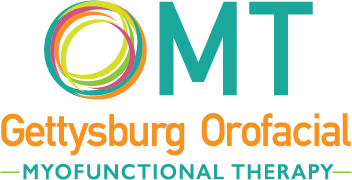Dental Emergency 101
Tooth or mouth pain is no fun. Each year, roughly 2 million Americans visit hospital emergency departments for dental pain, according to the American Dental Association (ADA). Knowing how to respond to a dental emergency can mean the difference between a beautiful smile and a damaged one. So, let’s explore what a dental emergency is, examples of them, and what to do if you have one.
What is a Dental Emergency?
A dental emergency occurs when a dental issue requires immediate attention to alleviate pain, prevent further damage, or protect overall health. Dental emergencies have many causes, from injury to infection.
Signs You May Have a Dental Emergency
Not all mouth pain or dental issues are considered an emergency. Here are a few signs you may be experiencing a dental emergency.
· Excessive bleeding from your gums
· A cracked, loose, or dislodged permanent adult tooth
· Facial or jaw swelling
· Intense dental pain
· A dislodged filling or crown
· Dental pain in conjunction with a fever
· Collection of pus around a tooth
· A metallic taste, which indicates a filling may have cracked or come loose
· Any kind of trauma to the face or mouth
· Difficulty eating or swallowing
· Extreme sensitivity to heat or cold
Common Types of Dental Emergencies (and How to Treat Them)
Below are the dental issues that warrant a visit to your dentist.
1. Toothaches. If you have a tooth or teeth that hurt so bad you can’t eat, it’s an emergency. Try to avoid taking pain relievers like aspirin – the medicine can actually burn your gum tissue if they come into contact with each other. Instead, thoroughly rinse your mouth with warm water and hold a cold compress on the outside of your jaw until you can get to your dentist.
2. Broken or dislodged teeth. If you fell, bit into something too hard, experienced an accident, or faced any other situation that caused your teeth to crack or become dislodged, seek immediate care. In the meantime, collect your tooth or any tooth fragments and put them in milk. Then rinse your mouth with warm water. If your mouth is bleeding, apply gauze to the affected area. If you’re in pain, hold a cold compress on the outside of your jaw until you can get to your dentist.
3. Missing crown or filling. Crowns and fillings are forms of restorations used to fill an area of one or more decayed teeth. If your crown or filling comes out, your teeth could be at risk of further damage. To protect your exposed tooth, take a piece of sugar-free gum and place it in the cavity until you can see your dentist. Bring the crown with you.
4. Abscess. A tooth abscess is a build-up of pus that forms in your gums caused by a bacterial infection. A few causes include an untreated cavity, gum disease, and trauma to the teeth. If an abscess forms, rinse your mouth with warm salt water to help relieve pain and apply a cold compress to reduce swelling. Do not squeeze or drain the abscess on your own. It’s crucial to treat a tooth abscess immediately. If left untreated, it can lead to serious complications and even death.
5. Broken braces. Sometimes, brackets or wires can break. Some may ignore it if there’s no pain, but damaged orthodontics should be addressed immediately. This can slow or even reverse progress toward your perfect smile and cost you in the long run. Avoid hard, sticky, or crunchy foods, and avoid chewing in the affected area. Visit your orthodontist as soon as possible.
How Gettysburg Dental Associates Can Help
We prioritize the well-being of our patients, especially during dental emergencies. We understand that unexpected dental and orthodontic issues can cause extreme discomfort and anxiety, so we offer emergency same-day orthodontics for existing patients and emergency same-day dental visits for new and existing patients. Whether you’re experiencing severe pain, broken braces, or any other urgent concern, our dedicated team is here to provide expert care.
Call us any time at 717-334-8193 to speak to a Gettysburg Dental Associates team member!






